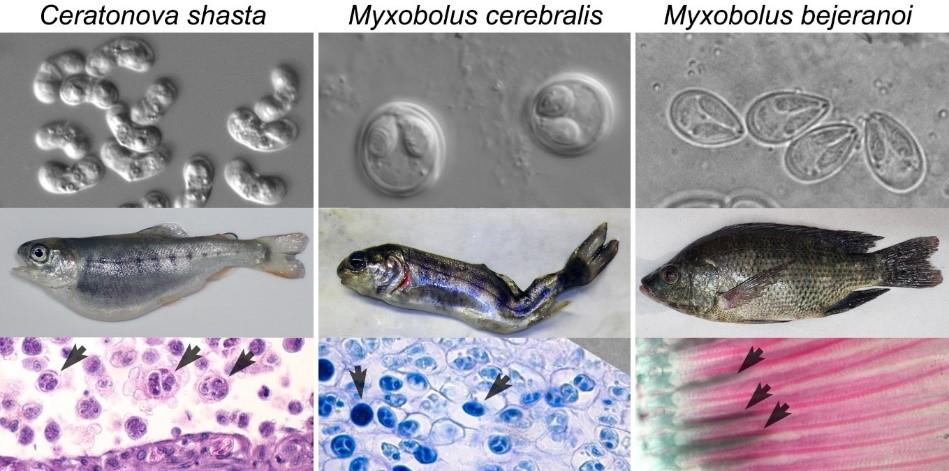Disrupting the Signal: Characterization and Inhibition of the Host-Parasite Sensing Apparatus: Dr. Jerri Bartholomew and Dr. Stephen Atkinson have been awarded a grant from the Binational Agriculture Research and Development Fund in partnership with Dr. Tamar Lotan at the U. of Haifa, Israel to study how fish parasites sense and sting their fish hosts: using salmon and trout models in the USA and farmed tilapia in Israel. The objective is to characterize host sensing and signaling mechanisms in the hopes of preventing infection. This grant will also support a new graduate student, Laila Brubaker.
Stopping Disease in Salmon
Stopping Disease in Salmon

The three pathogenic myxozoan parasites in this study: myxospores (top), fish hosts with clinical signs (middle), and parasites (arrows) in target tissues. C. shasta causes enteronecrosis in rainbow trout, with spores developing in intestine wall and lumen; M. cerebralis causes whirling disease in trout, with spores developing in cerebral cartilage; M. bejeranoi, causing hypoxia in tilapia, with cysts in gill lamellae.